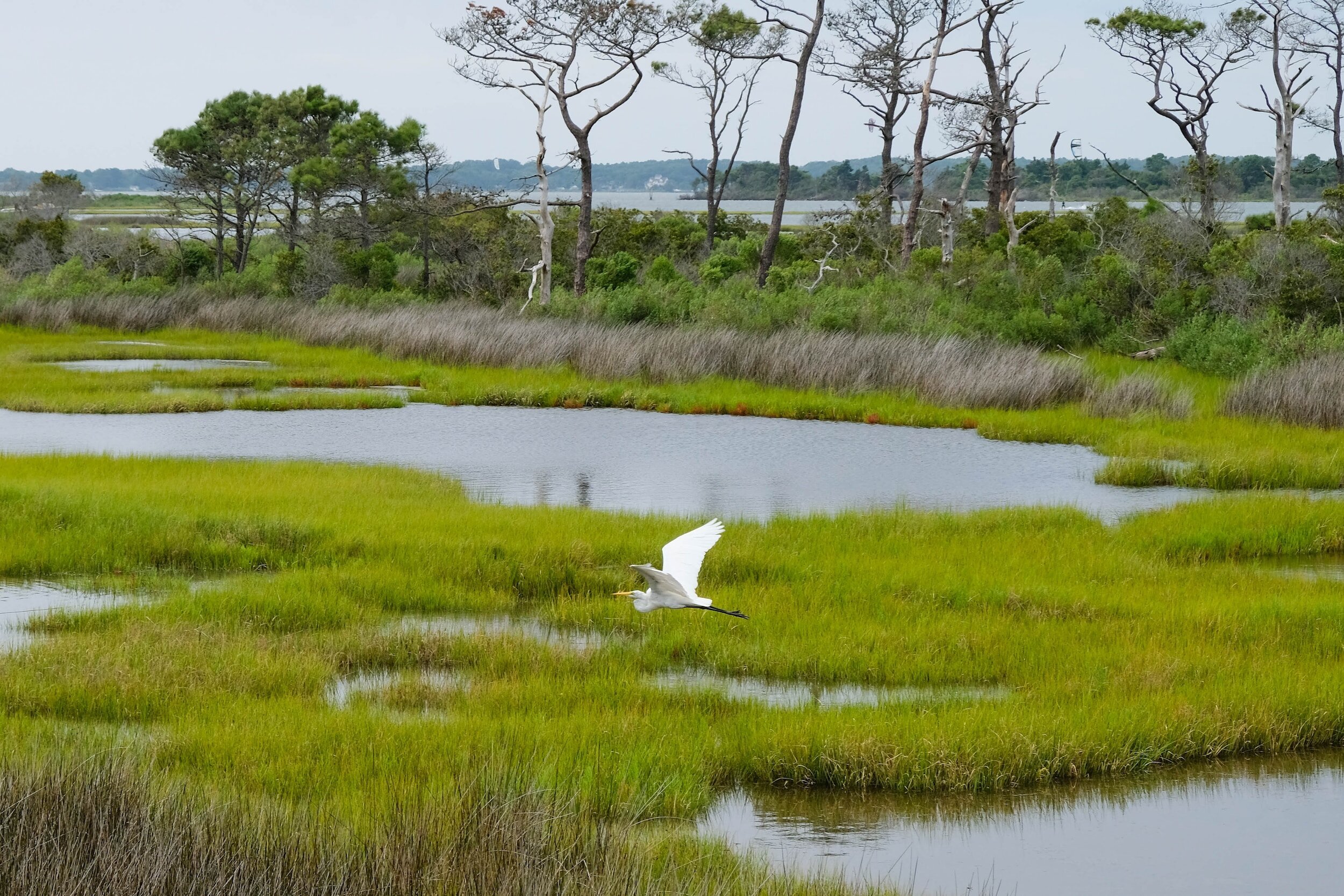
Economic Benefits of Wetlands
Storm Protection
Wetlands serve as natural sponges, storing excess water during flooding events and slowly releasing it over time. The Environmental Protection Agency describes how a one-acre wetland–about three-quarters the size of a football field–can store three acre-feet of water, or about one million gallons.
The mechanics are relatively straightforward. EPA describes how “trees, root mats and other wetland vegetation slow the speed of flood waters and distribute them more slowly over the floodplain. This combined water storage and braking action lowers flood heights and reduces erosion.”
Economic Benefits of Natural Infrastructure
National Oceanic & Atmospheric Administration
“Coastal wetlands in the U.S. are estimated to provide $23.2 billion in storm protection services every year.”
“Wetland and reef restoration in the Gulf of Mexico can yield benefit-to-cost ratios greater than seven to one.”
Siddharth Narayan et al.
“Using an extensive database of property exposure, the regional study shows that wetlands avoided $625 Million in direct flood damages during Hurricane Sandy. The local study combines these models with a database of synthetic storms in Ocean County and estimates a 16% average reduction in annual flood losses by salt marshes with higher reductions at lower elevations.”
Quantifying Flood Mitigation Services: The Economic Value of Otter Creek Wetlands and Floodplains to Middlebury, VT
Watson et al.
“Our analysis indicates damage reductions of 84–95% for Tropical Storm Irene and 54–78% averaged across all 10 events. We estimate that the annual value of flood mitigation services provided to Middlebury, VT, exceeds $126,000 and may be as high as $450,000.”
North Carolina Coastal Habitat Protection Plan
“Updated valuations of selected wetland ecosystem services including storm protection, erosion protection, and wastewater treatment, estimate monetary values for tidal marsh/mangrove at roughly $78,000 per acre per year.”
Coastal wetlands reduce property damage during tropical cyclones
Fanglin Sun and Richard T. Carson
“The expected economic value of the protective effects of wetlands varies widely across coastal US counties with an average value of about $1.8 million/km^2 per year and a median value of $91,000/km^2. Wetlands confer relatively more protection against weaker storms and in states with weaker building codes. Recent wetland losses are estimated to have increased property damage from Hurricane Irma by $430 million.
The resilience measure that offers the greatest discount for policyholders under the Community Rating System (CRS) is the protection of open space within high risk flood zones. Keeping our shoreline buffers and wetlands undeveloped protects our wetlands of today and the future. FEMA recognizes that wetlands function as highly effective natural buffers, absorbing stormwater, mitigating erosion, and reducing damage from flooding. As a result, FEMA rewards policyholders in communities that prioritize wetland and shoreline buffer protection with reduced flood insurance rates.
Other Benefits
Fisheries Management
“By providing habitat for fish and improving the health of marine ecosystems, wetlands help Virginia Marine Resource Commission and Virginia Department of Wildlife Resources meet inland and saltwater fishery management plan goals. The American Sportfishing Association estimates that in Virginia, $998 million is spent on fishing annually, with 9,785 jobs supported and $72 million in state and local tax revenue raised.”
Carbon Sequestration
“Wetlands have a remarkable capacity to sequester carbon despite covering less land area than other ecosystems, like forests. One reason why these ecosystems accumulate carbon so effectively is that they are water-logged, dark, and very productive, which creates conditions for highly stable carbon content. They store carbon in vegetation above ground and underground, in sediment beneath live plants, and in dead plants, such as leaf litter.”
Threatened & Endangered Species Habitat
EPA describes how “more than one-third of the United States' threatened and endangered species live only in wetlands, and nearly half use wetlands at some point in their lives.”
Water Filtration
“Wetlands purify our water by removing sediments and other pollutants including chemicals. Wetlands also filter and process excess nutrients that may runoff from agricultural and development sites. Wetlands have been called ‘the kidneys of our watersheds.’”
Even Small Wetlands Matter!
North Carolina Coastal Habitat Protection Plan
“Near complete dissipation of wave energy has been documented by marshes extending approximately 30 meters from the shoreline; however, due to the non-linearity of wave damping, marshes under 10 meters in width are frequently capable of reducing wave heights by 50-80 percent.”
National Oceanic and Atmospheric Administration
Just fifteen feet of wetland can absorb 50% of incoming wave energy.








